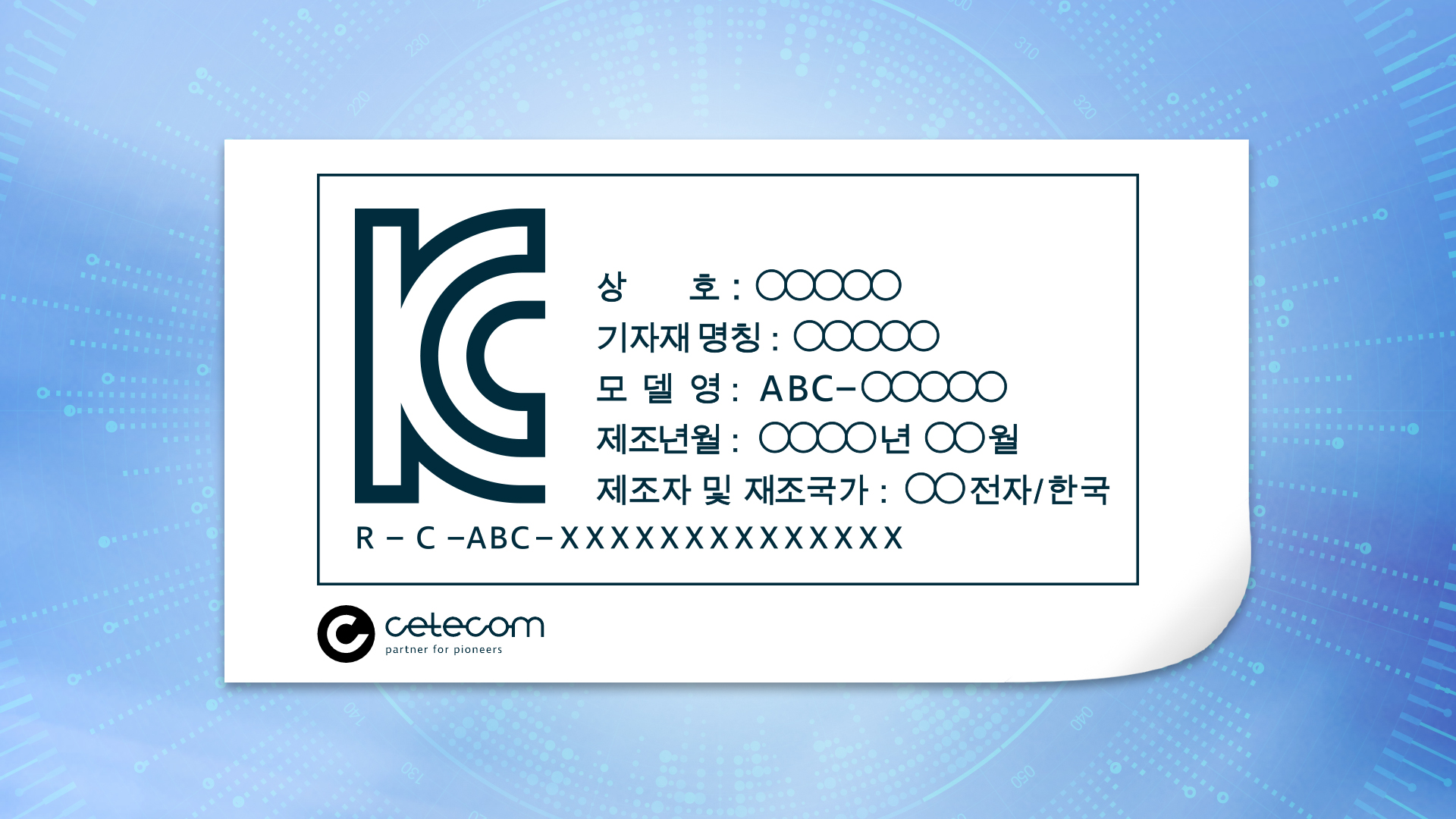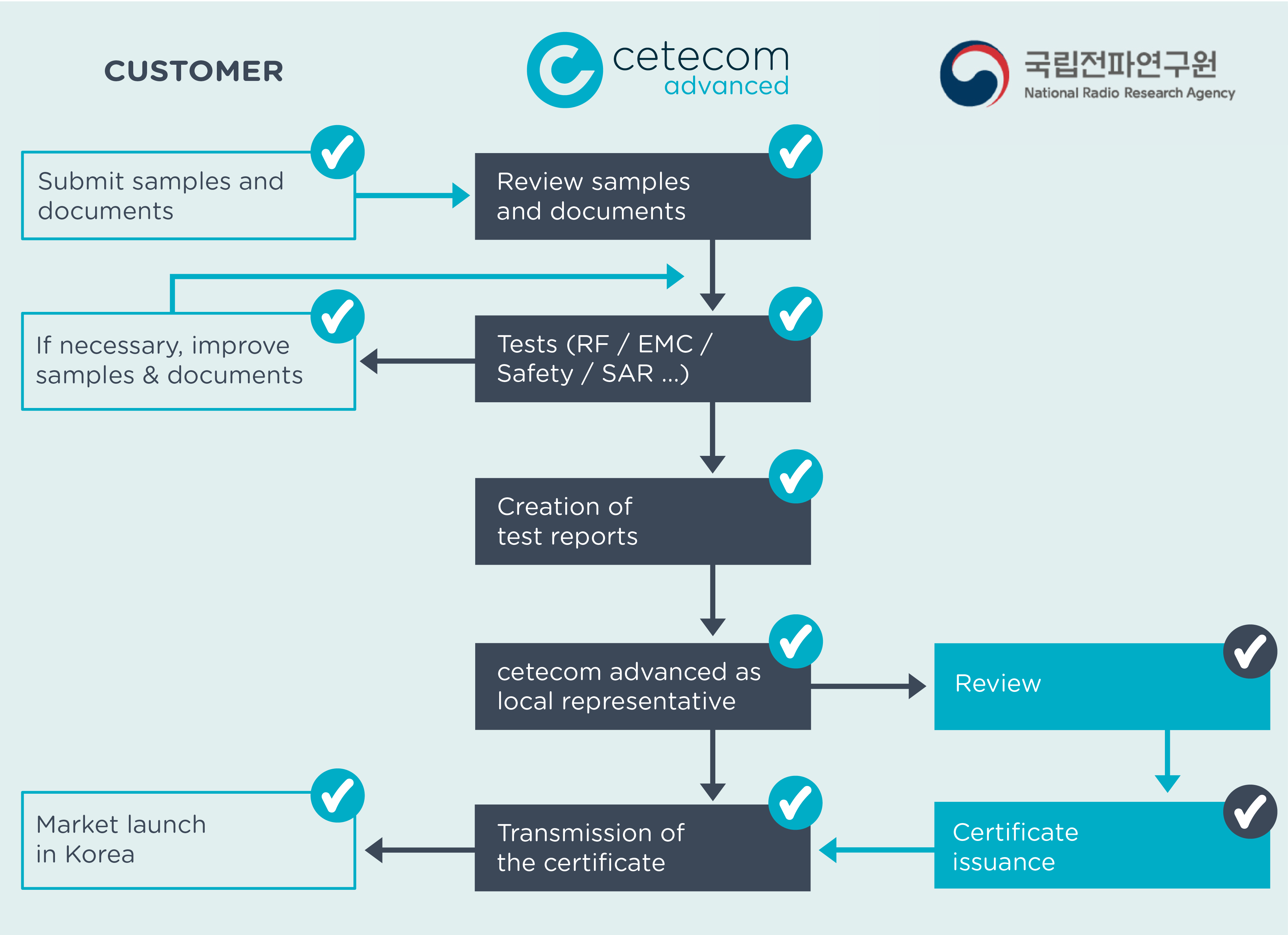Market approval in South Korea is based on the requirements of the local authority KC (Korea Certification). To obtain market approval for a device with radio technologies in South Korea, KC certification is required. Once approval has been completed, the manufacturer is obliged to use the KC certification mark, which is permanently valid according to the authority’s specifications.
In order to offer broadcasting and communication equipment in the South Korean market, one of the three possible certifications under the regulations of the Broadcasting and Communication Equipment Conformity Assessment System under Article 58-2 of the Broadcasting Act must be in place:
Most RF (radio frequency) devices must be approved through the certification of conformity. For devices that may affect the radio environment, broadcast communications network, or the like, as well as devices whose normal operation is subject to possible interference from radio waves, the certificate of conformity can be applied for from the National Radio Research Agency (RRA) with the appropriate documentation
Most non-RF (radio frequency) equipment must be approved by registering compliance. Broadcast and communication equipment not subject to the certificate of conformity can be registered by attaching the letter confirming compatibility to the application to the RRA.
Examples:
KC conformity registration is divided into two schemes:
* One of the following three conditions for acceptance of the test report applies:
This applies to broadcast and communications equipment that, because of its characteristics or use, does not require testing by a designated testing laboratory. The test standard for this case shall be a CN standard or an IEC standard equivalent to the KC standard (CB certificate according to International Electrical Equipment Certification Organization (IECEE) CB Scheme).
RRA cannot accept the EN/FCC test report when processing the KC approval. The test must be in accordance with Korean Testing Standards (KS) and the test report must also be in accordance with Korean Testing Standards.
In the event that there are no criteria for assessing the conformity of broadcasting and communication equipment, or it is difficult to assess conformity, it can be assessed using the standard, specification or technical criteria of other countries. In this case, the equipment is marked with the region, validity period and certification conditions. This solution is necessary, for example, for newly developed devices whose conformity assessment criteria are not yet available.
The following documents are necessary for the evaluation of preliminary compliance:

The conformity assessment label consists of the basic pattern of the KC mark, the identification code and the information on the conformity assessment performed. The label must be firmly affixed to the device by printing or engraving so that it can be easily identified on the surface and packaging of the product. The conformity assessment information refers to:
The purpose of KC safety certification is to protect people’s lives and bodies from fires and electric shocks that could be caused by the use of electrical appliances. The mandatory certification system ensures that only electrical appliances whose safety has been certified are sold on the South Korean market. Before distribution on the market, conformity with safety standards is ensured through product testing. Furthermore, a factory inspection is conducted to determine whether the manufacturer can continuously maintain the quality of certified electrical products.
Here you can find out everything about electrical safety
We offer our customers all services for an approval on the Korean market. We as cetecom advanced take over the project handling for you in the whole testing and certification process, including the final coordination with the authority and the local representatives. We ensure an efficient approval process and a fast approval to the Korean market.

Family approvals are accepted at the RRA. In the following cases, the devices can be registered as family models:
Any changes beyond this will result in renewed and additional tests.
If the conformity assessment mark cannot be displayed on a product due to its size, it can alternatively be displayed on the product packaging. It is also possible that only the basic design or the identification code is displayed on the product. If it is not possible to display the conformity assessment information on the product itself or on the packaging due to the product design, it can also be indicated in the instructions for use (including the electronic method).
Example based on KC sample requirements for the wireless module:
SAR testing is required for portable radio equipment (including broadcast and communications equipment with built-in radios) where the antenna power exceeds 20 mW and the center of radio wave emission is within 20 cm of the human body during normal use. This is specified by Article 2 of the specifications in the ‘Equipment subject to measurement of electromagnetic wave intensity and absorption rate’.